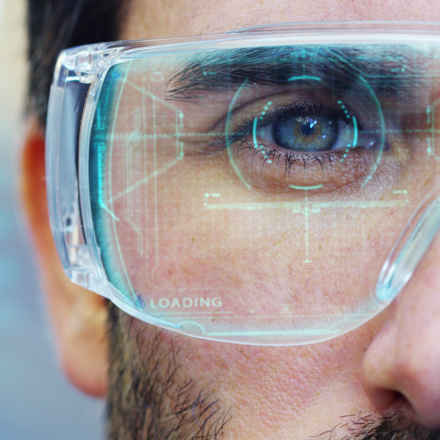Real-life costs and benefits of wearable low vision aids

Dr Keziah Latham, Anglia Ruskin University - £105,697
This project compared different low vision aids (LVAs) to explore their use, cost-effectiveness, and impact on quality of life. The aim was to help people with macular disease make informed decisions about which device best suits their lifestyle, particularly considering the cost of some devices such as wearable technologies.
What was the problem?
There are many LVAs available on the market for those with macular disease, but choosing the right one can be challenging. Wearable Electronic Vision Enablement Systems (wEVES) are head-worn devices that use cameras and software to magnify and enhance images displayed on small screens in front of the eyes.
Although these devices were first introduced in the 1990s and have evolved significantly, little research has assessed whether wEVES are a practical or effective choice for people with AMD. People often want to know whether the cost and effort of using these devices is worthwhile compared with more traditional LVAs.
What did the project achieve?
The study involved 42 participants completing 48 daily tasks, comparing the performance of a wEVES with a traditional LVA.
Key findings included:
- Advantages and disadvantages of wEVES: Some tasks were easier with wEVES, while traditional LVAs performed better for others.
- Practicality over time: Interest in using wEVES declined over time, highlighting areas for improvement.
- Potential: With refinements, wEVES could make everyday activities easier and more independent for some users.
What next?
This research gives people with AMD the information they need to make informed choices about LVAs. While wEVES can improve vision for certain tasks, traditional LVAs remain more effective for others. Anyone considering a device should weigh these benefits and potential limitations carefully before deciding.
The findings also provide guidance for future development of wearable vision devices, helping designers create more practical and user-friendly solutions.
Want to know more?
To learn more about the latest research in low vision and wearable technology, please see the two videos below.
See our other projects
Since 1987 the Macular Society has invested around £10 million in over 100 research projects.
Explore more research
Beating macular disease through funding medical research and improving the lives of those living with macular disease.
Get the latest research news from the Macular Society
To hear about life-changing research and treatments, subscribe to our monthly enewsletter today. Together we can Beat Macular Disease.
Sign up to our free email newsletter



